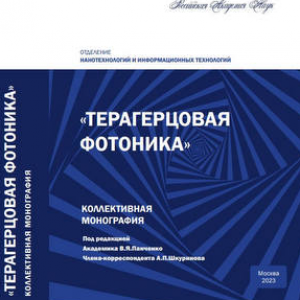The characteristics of high-power terahertz beams in new laser systems can be controlled using silicon and diamond optical elements created at the Samara University.
According to the authors of the research, the development can be applied in materials processing, the creation of optoelectronic devices for information processing, as well as in telecommunications. The research results were published in the collective monograph of the Russian Academy of Sciences "Terahertz Photonics".
Terahertz radiation has unique properties for optoelectronics, scientists from the Samara National Research University named after Academician S.P. Korolev told Sputnik. They have developed efficient methods for calculating and creating optical elements that operate in the terahertz range of the electromagnetic spectrum, located between the infrared and microwave ranges.
Researchers have created a wide range of optical elements that allow manipulation of terahertz laser radiation. According to them, silicon and diamond diffractive optical elements for the terahertz range were created for the first time, which make it possible to form powerful beams with specified characteristics (including the so-called “rotating beams”) and focus radiation into specified areas of space.
Rotating beams are used to study the properties of the atmosphere, and replacing point-by-point scanning with focusing into uniform areas makes it possible to increase the efficiency of scanning systems.
New elements will make it possible to effectively use the capabilities of terahertz radiation, said Vladimir Pavelyev, head of the department of nanoengineering at the Samara University.
"Terahertz radiation has unique properties that open up new horizons for scientific research and technological development. The ability to penetrate many materials without damaging them makes terahertz radiation an indispensable tool for non-destructive control. Due to its high sensitivity to various substances, this type of radiation is widely used in spectroscopy to identify materials,” he said.
The scientist noted that terahertz radiation is used in atmospheric research, in the study of its composition and dynamics. The development of terahertz technologies opens up new horizons in such areas as materials processing, the creation of terahertz optoelectronics devices for information processing, and telecommunications.
The developments were the result of research that was carried out for more than 10 years on specialized equipment. Among them is the Novosibirsk Free Electron Laser (NFEL) at the Institute of Nuclear Physics SB RAS, which makes it possible to obtain powerful coherent terahertz radiation at a given wavelength and conduct fundamental and applied research.
To create elements of terahertz optics, scientists used methods for calculating diffractive optical elements developed at the Samara University and the Institute of Image Processing Systems of the Russian Academy of Sciences and previously used in the optical range. To structure polycrystalline diamond plates, technologies developed at the Institute of General Physics of the Russian Academy of Sciences (Moscow) were used.
Lithographic technologies for manufacturing elements of silicon optics in the terahertz range were developed at the Samara University.
In the near future, scientists will begin to create photonic elements in a longer wavelength range.
The research was carried out with the support of grants from the Russian Science Foundation, the Russian Foundation for Basic Research, programs of the Presidium of the Russian Academy of Sciences, and the Priority-2030 program.
